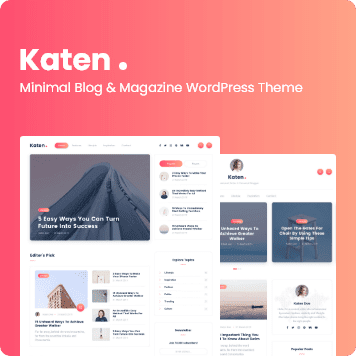
In 2025, search is no longer just about ranking on Google. It’s about being:
- Found by search engines (SEO)
- Understood by AI models (AIO)
- Recommended by generative engines (GEO)
- Featured in AI-powered answers (AEO)
- Engaging enough to convert users (SXO)
Let’s explore each of these five pillars in detail, with updated examples and actionable insights.
1. SEO – Search Engine Optimization
What It Means:
SEO is the foundation of digital visibility. It ensures your content ranks well in traditional search engines like Google and Bing.
How It Works:
- Keyword Research: Identify high-intent, relevant keywords.
- On-Page SEO: Optimize titles, headers, meta descriptions, and internal linking.
- Technical SEO: Improve site speed, mobile usability, and crawlability.
- Backlink Building: Earn links from authoritative, niche-relevant sources.
Ask Yourself:
“Will this help me rank higher on Google?”
Example:
A B2B cybersecurity firm ranks #1 for “zero trust network architecture” by publishing a comprehensive guide, optimizing for long-tail keywords, and earning backlinks from industry publications like CSO Online and TechTarget.
Why It Matters in 2025:
Despite the rise of AI, traditional search engines still drive massive traffic. SEO ensures your content is discoverable in organic search results, which remain a key entry point for users.
2. AIO – AI Optimization
What It Means:
AI Optimization ensures your content is structured and credible enough to be included in the training data and retrieval systems of AI models like ChatGPT, Gemini, and Claude.
How It Works:
- Use Structured Data: Leverage schema.org markup (e.g., Product, FAQ, HowTo).
- Publish on Trusted Platforms: Contribute to GitHub, Stack Overflow, Wikipedia, and academic repositories.
- Maintain Consistency: Ensure your brand and facts are consistent across the web.
- Use Clear, Factual Language: Avoid fluff and ambiguity.
Ask Yourself:
“Will this help the model learn about me?”
Example:
An open-source climate data API becomes part of AI model responses by maintaining detailed GitHub documentation, publishing peer-reviewed papers, and being cited in government datasets.
Why It Matters in 2025:
AI models are now a primary source of information for millions. If your content isn’t part of their knowledge base, you’re missing out on massive visibility.
3. GEO – Generative Engine Optimization
What It Means:
GEO is about optimizing your content to be selected and cited by generative AI tools when they answer user queries.
How It Works:
- Write for Summarization: Use short paragraphs, bullet points, and clear subheadings.
- Add Schema Markup: Especially FAQ, Article, and HowTo schemas.
- Use Authoritative Sources: Link to credible references to boost trust.
- Be Factual and Neutral: Avoid overly promotional language.
Ask Yourself:
“Will this help the model recommend me?”
Example:
A nonprofit’s guide on “how to reduce plastic waste at home” is featured in a ChatGPT response because it’s well-structured, fact-checked, and includes citations from environmental agencies.
Why It Matters in 2025:
Generative engines are replacing traditional search for many users. GEO helps your content surface in AI-generated answers, even when users never visit a search engine.

4. AEO – Answer Engine Optimization
What It Means:
AEO focuses on crafting content that directly answers user questions, especially for zero-click searches and AI Overviews in Google.
How It Works:
- Answer First: Put the answer in the first 1–2 sentences.
- Use Question-Based Headings: e.g., “What is a carbon credit?”
- Implement FAQ Schema: Helps Google and AI engines extract answers.
- Target Featured Snippets: Use concise, authoritative language.
Ask Yourself:
“Will this be the answer Google highlights?”
Example:
A legal blog appears in Google’s AI Overview for “What is a non-compete clause?” by clearly defining the term in the opening paragraph and using FAQ schema to address related questions.
Why It Matters in 2025:
Google’s AI Overviews and zero-click results are reducing traditional CTRs. AEO ensures your content still gets visibility, even when users don’t click.
5. SXO – Search Experience Optimization
What It Means:
SXO is about optimizing the user experience after they land on your site—so they stay longer, engage more, and convert better.
How It Works:
- Fast Load Times: Aim for <2 seconds on mobile.
- Clear CTAs: Use action-oriented buttons and forms.
- Match Search Intent: Align content with what users are really looking for.
- Scannable Layouts: Use headings, bullet points, and visuals.
Ask Yourself:
“Will this turn traffic into action?”
Example:
A fintech startup’s landing page for “instant business loans” loads in under 1.5 seconds, uses trust badges, and includes a simple loan calculator, leading to a 4x increase in conversions.
Why It Matters in 2025:
Ranking is just the beginning. If your site doesn’t deliver a great experience, users will bounce, and search engines will notice.
Final Thoughts: The Future of Search Is Multi-Dimensional
To thrive in 2025, you need to go beyond traditional SEO. You must:
- Rank well (SEO)
- Be part of AI knowledge (AIO)
- Be recommended by AI (GEO)
- Be the answer (AEO)
- Deliver a great experience (SXO)
Each layer supports the others. Together, they form a holistic strategy that ensures your brand is visible, credible, and effective across both search engines and AI platforms.




Leave a Reply